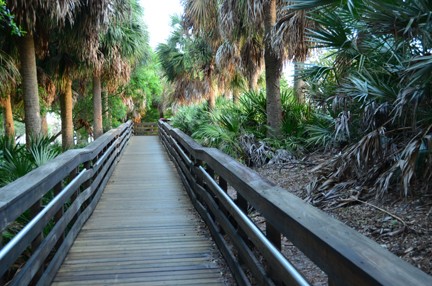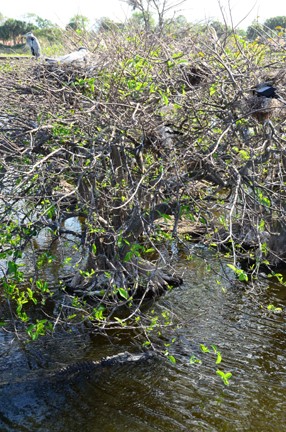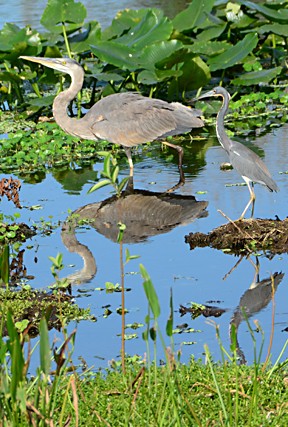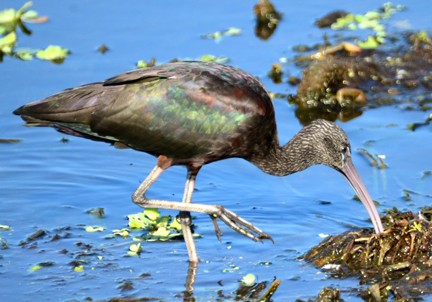Wakodahatchee Wetlands February 2013 |
||
|
|
One of the wonderful things about Florida is a product of one of the most terrible things about Florida. Because so much of the natural habitat has been destroyed, any habitat remains is usually loaded with wildlife. And, if you're lucky, the animals are used to people. The Wakodahatchee Wetlands Complex, operated by the Palm Beach County Water Utilities Department, is just such a place. This gem is designed to provide the final treatment effluent from a water treatment facility and it has been open to the public from day one. With so little "natural" habitat available, Wakodahatchee stands out as an oasis for the birds. |
|
 |
The Boardwalk The feature that makes this bird paradise a photographer's paradise as well is the boardwalk. I shudder to think of how much money this thing cost, but it is an absolutely amazing way to get deep into a wetland system while also staying safely above the water. You see, Florida wetlands provide homes for more than just birds... |
|
Alligators Abound! Large numbers of birds are drawn to the wetland habitat. The water is filled with fish, frogs, insects, snakes, and all maner of aquatic life. The birds, in turn, represent a tremendous source of food for any animal large enough to capture them. Smaller birds have to worry about raptors, but the larger birds have to keep their eyes on the water, rather than the sky. This is because the wetlands of Florida are home to the American alligator, the largest and most charismatic of the reptilian megafauna. In this photo I show how dangerous the situation can be. A small tree provides nesting opportunities for a pair of great blue herons (upper left) and several pairs of anhingas (upper right). Eggs and chicks can sometimes fall from the nests due to the hectic interactions between so many birds crammed into such a small place. And what happens to anything that falls in the water? Look in the water beneath the tree!
|
 |
|
|
Blending In! The best thing about boardwalks in natural areas like Wakodahatchee is the fact that they are heavily used. This means that the birds will quickly acclimate to humans. At least, it means this in Florida. Birds have a choice: ignore the people and take advantage of the habitat, or flee from the people and miss out on the habitat. So, the birds that accept people in their midst get very good at ignoring them, which is perfect for a photographer. I would never be able to get so close to a glossy ibis in Cape Cod because the ibises have so many options. In Florida, however, you can get within 40 feet of a feeding ibis without any trouble at all. |
|
Waders Rule! Every area has its featured birds. In the Northeast, where I live, there are several different habitats that offer several different groups of birds to look for. Fields are places to look for bobolinks and meadowlarks, forestst are places to look for thrushes and warblers, and wetlands are places to look for ducks, geese, and the occasional heron. Florida, on the other hand, is the land of the big wading birds. Every type of heron, every type of egret, and all of the rails, coots, moorhens, and gallinules you can think of are virtually everywhere. Oh, and did I forget to mention the ibises, storks, spoonbills, and limpkins? Sure there are little birds in Florida, but it's the big ones that really capture the attention of the visitor. These birds are so colorful and graceful...and plentiful! Oh to be able to jump in a time machine, spend a day in Florida in 1500, and see what multitudes of avian splendor must have existed in that time. |
 |
|
Copyright 2014 William Danielson |
||
